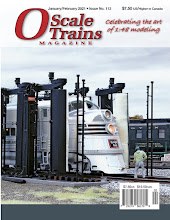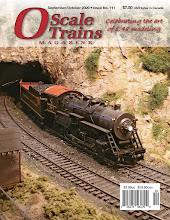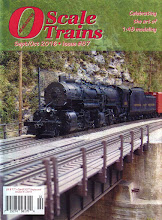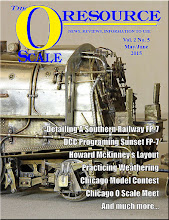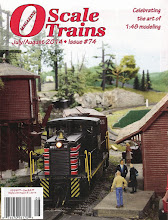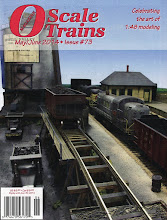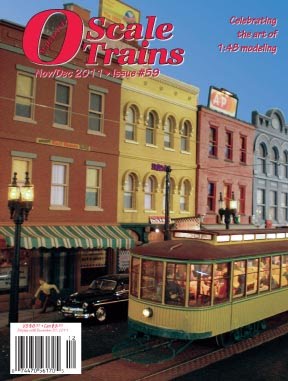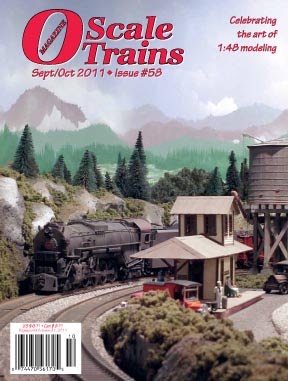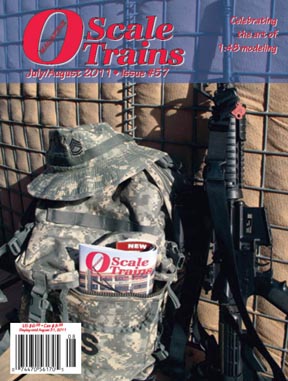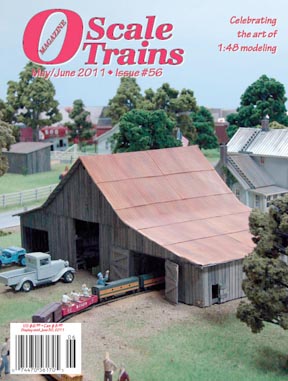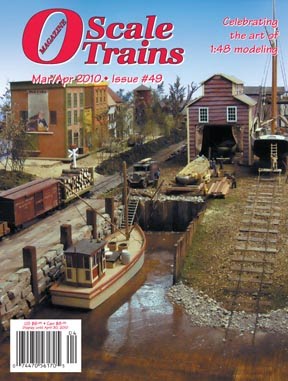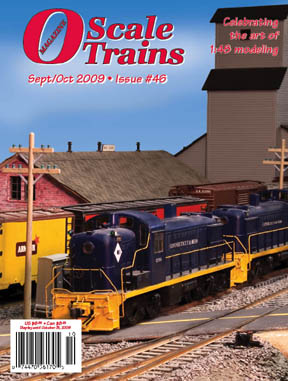First, I'll start by stating, I'm not sure if this RPM advertises anywhere, but if it wasn't for a friend telling me about it after seeing my RPM-Cocoa Beach post, I wouldn't have known it existed and I do visit more than just O-scale related forums/groups and subscribe to RMC/MR as well. (If it was in the latter, than I must have missed the announcement.)
With it being so physically close, I used it as motivation to do more modeling. In preparation for this RPM, I spent about a month finishing a handful of projects and upgrading/repairing some models I built over a decade ago to my standards of today (magnetic air hoses, coupler lift bars, etc.) I also had fun figuring out how I was going to package everything for transport in my vehicle without putting everything back in their OEM box. I ended up using some spare Pelican case foam I was given by a friend.
(Note if you've never read anything on blogspot before, that all photos are clickable to see the original size.)
Here's an example of one such model that had broken or missing details that I fixed up for the RPM:
The RPMVF already took down their website schedule before I could write this, but here is a snapshot of Saturday's events with my notes.
For various reasons, I actually ended up going to the following:
- Ramon Rhodes: The railroads of Birmingham, Alabama
- Ted Dilorio: Hands on weathering clinic
- Nicholas Kalis: Using artistic principles to enhance the story of your RR
- Rich Mahaney: Perishable Operations in the 1950's
- Larry DeYoung: What's available in O-scale modeler in this minor scale
- Doug Chapman: A look at the Ralston Steel Car Company of Columbus, OH
I had arrived at the hotel before the start of the meet (even after stopping at the Chic-Fil-A across the street for breakfast) and was pleasantly surprised to find the registration table manned early and the model contest room open not long after my arrival. I made good use of the luggage dolly and was able to setup my display, photograph the rest of the model room, and spend some time in Bob's Photos before the second session of clinics started.
My first clinic of the day was with Ramon Rhodes and his childhood stories of riding the Southern Railway intertwined with his desire to model Birmingham AL...not to be confused with Baltimore MD. The mixture of story telling and historical significance of various railroad landmarks was rather entertaining, and I learned a bit about how the Southern did some of its operations in the area.
During the lunch time, I briefly visited the Vendor Room and outside of tools and books, there was nothing O-Scale as I expected. I spent more time with Bob's Photos (he brought almost everything he owns, which was quite impressive) looking for more interesting rolling stock photos that I could use for modeling or weathering purposes. I ended up also buying a heavily discounted NP rolling stock color guide as it had a ton of useful rolling stock overhead photos for how to weather roofs in the late 60's.
My next clinic was with Ted Dilorio to see what he could teach with hands-on weathering in about an hour. As I expected, it was very much geared toward fleet weathering and how to weather a car in about 20 minutes using Mig weathering enamel washes and powders. I think for those in a hurry and/or just want basic soot and grime, this was well worth the time. I brought a Lionel GLa hopper that I essentially wanted to rust out looking EOL. He was nice enough to let me experiment with some of the rust powders in addition to basic carside weathering. I'll have to do some more experimentation to get the look I'm looking for, but was able to see how the enamel washes worked. Congrats on your upcoming retirement.
I next sat in on a clinic with Nicholas Kalis, that he's apparently given several times with regard to telling stories throughout your layout. He provided steps to consider, but also highlighted several books that are key to understanding the topic. Ray Anderson's The Art of the Diorama and Van Gils Dioramas are the two primary sources he said to buy and use.
As for the 4pm clinic slot, the clinic on Airslide hoppers of the BO, CO, and WM was cancelled and so I decided to actually listen in on Rich Mahaney's clinic on Perishable Operations despite its focus on an era earlier than my modeling era. It's no wonder he gave five clinics that day. It was really thorough and provided great technical detail and advice for modeling reefers and gave historical perspective on how things came to be over time. I think the most interesting fact he provided was that by 1965 85% of refrigerator cars were actually owned by the railroads vs. private companies. Also interesting was the discussion of in the early days - heating the cars to keep them at certain temperatures.
For dinner, I ended up driving out to try Nick Filet to see what the hype was over their Filet Mignon sandwich (I thought it wasn't anything special) and across the street from it - an unexpected find - a decent Szechuan restaurant, in which I took a bunch of takeout to take home for the week's meals.
I came back in time for Larry DeYoung's clinic on O-Scale resources. The audience was extremely small (The title didn't exactly reflect the contents and most RPM attendees perhaps already know the resources for their given scale), but it was a good story on the prototype Larry was modeling, and how he was modeling it. Interestingly, when he goes model car shopping, he walks around with a template to measure the length of the wheelbase to help determine if a vehicle is 1:48 or not.
The last clinic I attended was with Doug Chapman on the Ralston Steel Company. He went other a a decent set of cars built for the Mid-Atlantic railroads. At some point in the past, someone had dumped a bunch of records about the company, and Doug picked up the mantle to go through it. I took a few notes on the N&W B-1 and B-5 series along with the SOU 45650-45999 stock car series. I can't remember specifically how much more material he has left to dig through, but he's looking for anyone who has ANY information on cars built by Ralston Steel Car Company to contact him. In some cases, he only has bits and pieces, so any information others have will allow him to continue to piece more information together. At minimum he is trying to assemble the full list of every series of cars they built for all roads. TOC1885 AT yahoo dot com
Overall, I had a great time at this RPM. Thank for to those who took the time to put this on. Having helped with an O Scale National, I know there is a lot to do to put these on behind the scenes. I learned some interesting things, saw some great models. The venue is also a fine choice. If I had to change anything, it would be the model room. IMHO, some of the lighting left a lot to be desired, especially once the daylight wore off. Just very inconsistent. Get there early to get a table with better lighting!
Maybe this post will help get a few more O-scalers to bring their models out to the RPM the next time it is held. Other than myself, only one other O-scale model was on display, and I believe that its purpose was to get a sale. For those who are curious, I did get some fanfare when I was nearby my table, so it's nice to feel welcomed by the HO modelers. The MTH SD45 was the most discussed model I brought. There were also maybe about a dozen 35 or younger attendees, which was something I wasn't expecting.
Here's a few photos of the model room...

The full assortment of my photos can be seen here:
https://link.shutterfly.com/DEeFZqebjpb






























































































